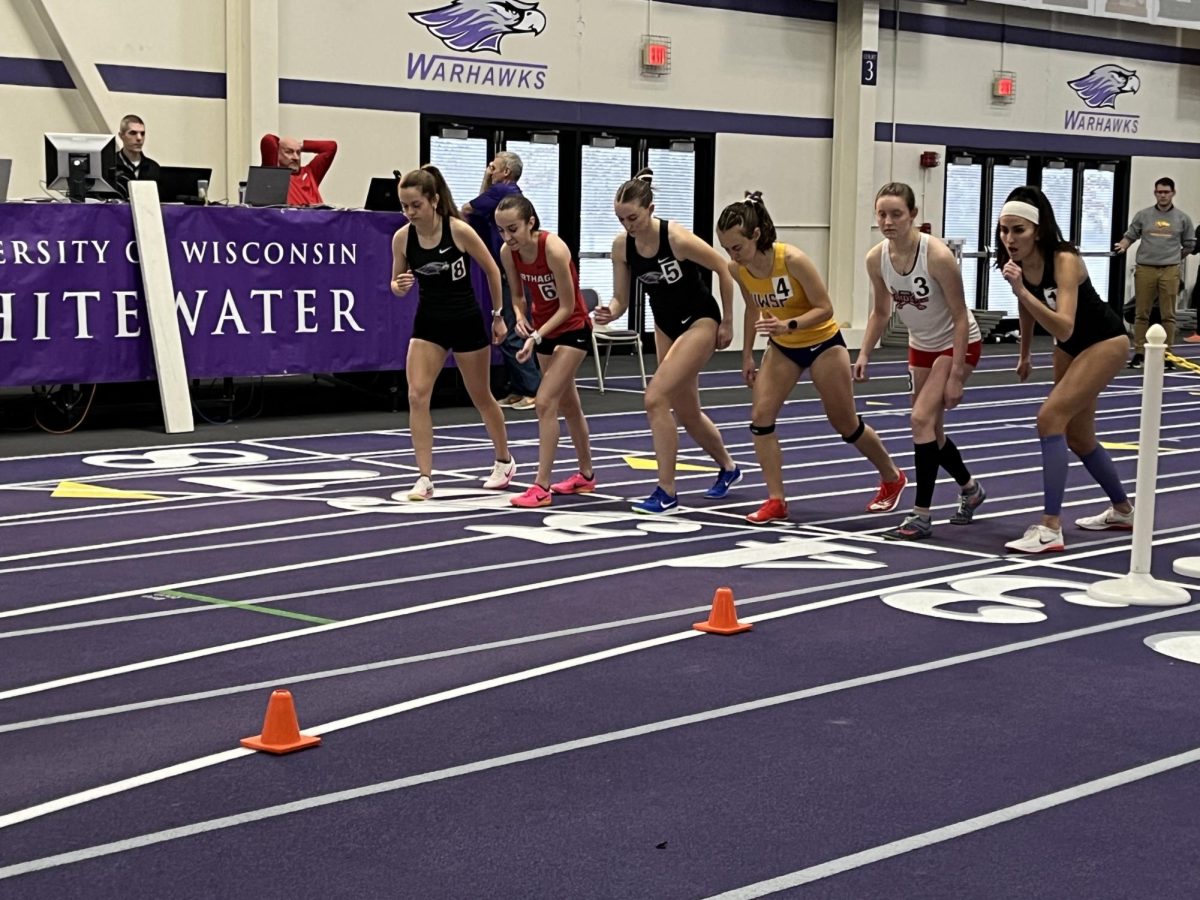Track and field is a unique sport because it’s not just played in one environment. In fact, meets are held both indoors and outdoors. Now, the difference between the two may not seem that significant. After all, the events are largely the same. However, there are key differences.
In the NCAA indoor track and field championships Whitewater finished 20th. Now they are knee-deep into the outdoor season fresh off the UW-Platteville invitationals where the weather was a factor. Perhaps that is the biggest difference between indoor vs outdoor sports. Rather than playing in an air-conditioned environment, athletes have to deal with Mother Nature’s own air conditioning, that being the wind. And wind actually can prevent an athlete from receiving a better time because not only can the wind deter a runner’s time, but if it helps a runner’s time that will also be noted. This is known as wind assistance which is the wind level registered by a wind gauge.
“How hard the wind is blowing can actually change how you run so there are marks to what counts as “wind legal”. For example, in the 100m or 200m if the wind is above 4 mph, then that time does not count in ranking systems (conference or nationally) so that can be a frustrating feat because it’s out of our control. In those moments we just have to do what we have been practicing for and run hard whether the time counts or not,” said Whitewater runner Tina Shelton.
The wind isn’t the only factor either because temperatures can change drastically from the start of a meet to the end of one. By the time the end of the outdoor season comes the temperature is much more consistent with what a typical spring day would be. However, in a case like Whitewaters first home meet on April 5th the day started out chilly and warmed up as the meet went on. But the wind was constantly blowing.
“Many people have strong opinions on whether they like indoor or outdoor seasons better and personally I think both of them have their perks. There’s nothing like running a 100m on a beautiful day outside but indoors there are no external factors that can hinder your performance (such as wind/weather). Both have their pluses and for sprints in particular, the two seasons are quite different so I can’t say I like one over another,” said Shelton.
Runners also have to deal with both headwind and tailwind. Tailwind is when the wind is blowing in the same direction as the runner which can help the runner if the runner is able to keep their balance and maintain their stride as they would if there was no wind at all. Headwind is the opposite where the wind is blowing against the runners. To measure the speed of the wind an anemometer is used. For track events the wind is measured inside of the oval somewhere in the range of 50 meters from the finish line whereas for field events the device is placed closer to where the event is taking place being about 20 meters away.
Another thing to keep in mind is the track is different from what is typically used indoors. Not only is the material different but it’s also bigger and races can be longer. This changes the way runners approach the events.
The track terrain makes a big difference. When you go to a track that’s twice the size [there’s] less turns to go around [and] bigger turns, it makes a big difference and of course it’s later in the year so there fitness continues to increase. And we have more events, so we have some athletes on our team that are specialists in outdoor events.
Overall, the sport itself does not change too much going from indoors to outdoors. But the differences such as the weather play a big role in how athletes perform going from the indoor setting to the outdoor.


